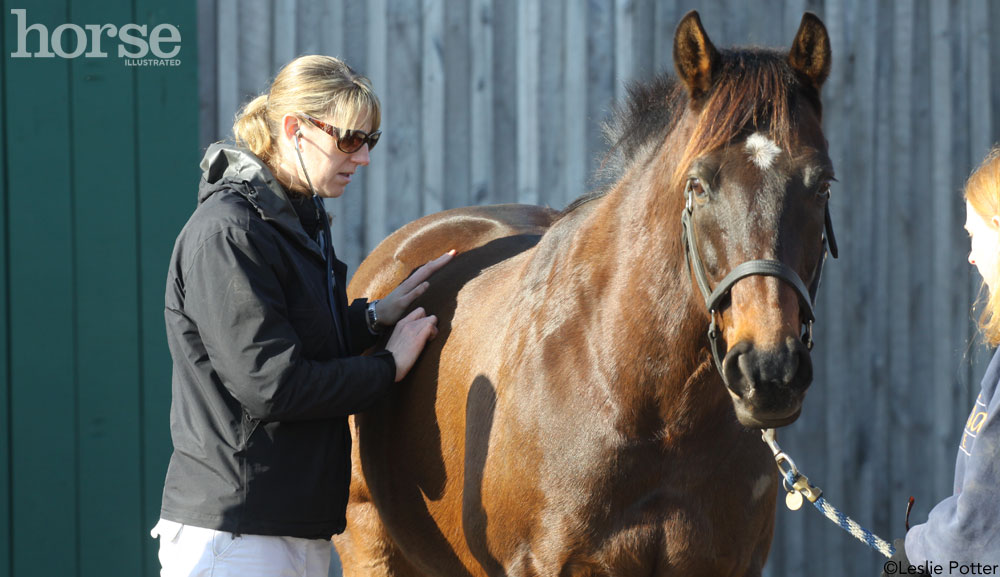
A: A pre-purchase examination (PPE) in a horse is a “snapshot” of the horse’s current health and soundness, and can range from a standard physical examination to a comprehensive inside and out inspection that includes a full musculoskeletal workup complete with imaging. There is no “one size fits all.” What determines the level of scrutiny – and therefore the cost – of a pre-purchase exam is what the buyer intends to do with the horse and how much is being spent on the purchase.
For example, the work-up for a “husband horse” whose job is to be a pasture ornament during the week and go on a one-hour trail ride on weekends will be much less extensive than a horse being imported from Europe to take a professional to the FEI levels of dressage, jumping, or eventing. Therefore it’s critical that the examining veterinarian and the buyer have a clear understanding of the goals and expectations of the pre-purchase. The seller also needs to be part of the conversation, because as the current owner he or she is responsible for sharing the history of the horse, both from a training/competition aspect as well as from a health perspective.
Almost all pre-purchase exams will include a general physical examination, which is a head-to-toe evaluation of the body and its functions using visual inspection, palpation (feeling with the hands), and auscultation (listening). Most vets start by looking at the horse’s conformation, hooves/shoeing, and overall presence and attitude. The vital signs (temperature, heart rate, respiratory rate) are taken, and the vet may choose at this time to listen to the heart, lungs, and gut sounds. Moving to the front of the horse, the eyes, ears, nose, and mouth are assessed, then the exam continues down the horse’s neck, back, and hindquarters, looking at the skin and palpating the muscles, bones, joints, tendons and ligaments, and other tissues. In most cases, the horse will be walked and jogged in hand — and perhaps even lunged – to check for soundness.
The basic PPE may conclude here. When the horse in question is of a higher value or more is expected of it however, a more thorough and intensive exam may be desired. Blood may be drawn to:
- assess overall well-being as well as the health of specific organs like the liver and kidneys;
- test for specific diseases like Equine Infectious Anemia; or
- examine for the presence of masking agents such as pain-killers and tranquilizers.
In addition, a more extensive musculoskeletal exam may be performed. That is, the horse may be jogged before and after flexion tests of the different front and hind limb joints, radiographs (x-rays) may be taken of certain bones and joints, and the horse’s way of going may even be evaluated under saddle if possible. Alternatively, a stallion or mare intended for breeding may instead undergo a reproductive exam, so what is included in the exam is dictated by the horse’s intended use.
Remember, there is no pass/fail when it comes to the PPE. You (and your trainer, if you have one) simply discuss with the vet what issues or problems were documented and decide if you are willing to accept what was identified and manage them or not. For example, a blemish like a cold, set splint probably isn’t important to someone looking for a safe, older horse to learn to drive with. But someone shopping for a conformation hunter may walk away from the deal. Also, keep in mind that the pre-purchase exam is not “insurance” against a health condition or lameness developing in the future.







[…] Ask the Vet: Pre-Purchase Exam – Horse Illustrated […]
[…] Ask the Vet: Pre-Purchase Exam – Horse Illustrated […]